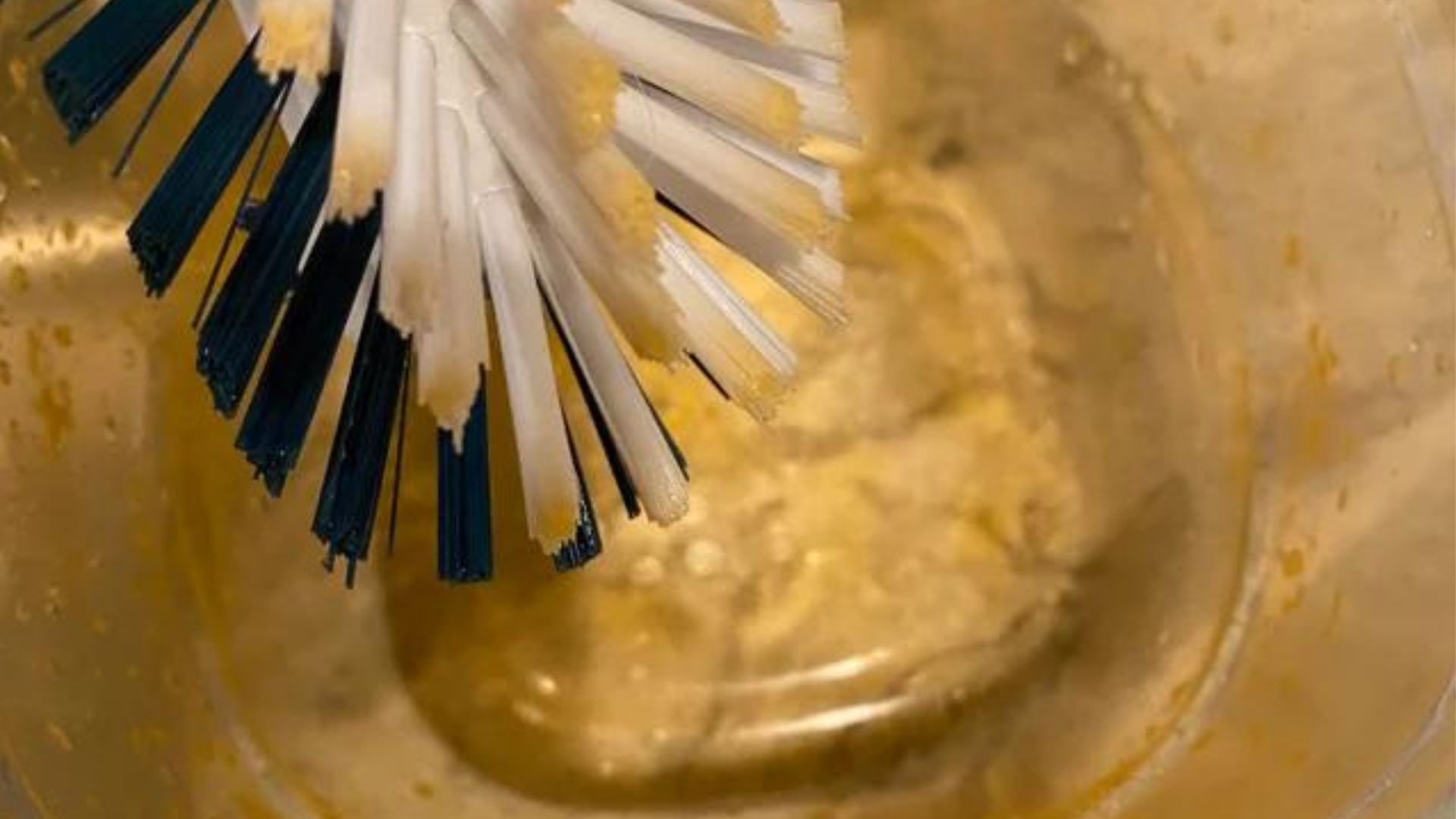Tomato stains can be a real nuisance, especially when they stubbornly cling to your favorite plastic containers. Whether it’s leftover spaghetti sauce, tomato soup, or a tomato-based curry, the red sauce can leave unsightly stains that seem impossible to remove.
But don’t worry, there’s no need to throw out your stained plastic containers just yet. This comprehensive guide will show you easy ways to remove tomato stains from plastic containers, ensuring they look as good as new.
What You Will Learn in This Post
- The best way to remove tomato stains from plastic containers.
- How to prevent tomato stains from setting in your plastic containers.
- The importance of choosing the right cleaning agent for removing tomato stains.
Understanding the Problem: Why Do Tomato Stains Stick to Plastic?
Before we dive into the ways to remove stains, it’s important to understand why tomato stains are so stubborn. The red pigment in tomatoes is called lycopene, and it has a tendency to cling to plastic. This is especially true if the plastic container is microwaved with the tomato sauce inside, as the heat can cause the lycopene to bind more tightly to the surface of the container.
How to Remove Tomato Stains from Plastic Containers
Method 1: Using Baking Soda and Dish Soap
Baking soda and
- Rinse the stained container with cold water.
- Make a paste with baking soda and a little water.
- Apply the paste to the stained area and let it sit for about 15-20 minutes.
- Scrub the stain with a soft brush or sponge.
- Rinse the container again. If the stain is still there, repeat the process.
- Once the stain is gone, wash the container with
dish soap and rinse it thoroughly.
Method 2: Using White Vinegar
White vinegar is another effective cleaning agent for removing tomato stains. Here’s how to use it:
- Fill the stained container with white vinegar and let it soak for a few hours or overnight.
- After soaking, scrub the container with a soft brush or sponge.
- Rinse the container with water. If the stain is still there, repeat the process.
- Once the stain is gone, wash the container with
dish soap and rinse it thoroughly.
Preventing Tomato Stains on Plastic Containers
Prevention is always better than cure. Here are some tips to prevent tomato stains on your plastic containers:
- Use glass containers: Glass containers don’t stain as easily as plastic ones. If you frequently store tomato-based foods, consider switching to glass Pyrex containers.
- Apply a thin layer of cooking spray: Before adding tomato-based food to your plastic container, spray a thin layer of cooking spray on the inside of the container. This creates a barrier that can prevent the tomato sauce from staining the plastic.
- Rinse immediately: After using a plastic container to store tomato-based food, rinse it immediately. This can help prevent the stain from setting in.
The Role of Different Types of Plastic in Stain Resistance
Different types of plastic have varying levels of resistance to stains. Some plastics, like polypropylene (often used in food storage containers), are more prone to staining due to their porous nature. On the other hand, plastics like PET (commonly used in water bottles) are less likely to stain due to their non-porous surface. Understanding the type of plastic you’re dealing with can help you better manage and prevent stains.
The Impact of Tomato Stains on Food Safety
While tomato stains can be unsightly, they don’t necessarily pose a threat to food safety. However, they can make it difficult to see if your container is clean, potentially masking other food residues that could harbor bacteria. Therefore, it’s always best to remove stains to ensure your containers are thoroughly clean.
Alternative Methods for Removing Tomato Stains
While baking soda and white vinegar are common household items that can effectively remove tomato stains, there are other methods you can try:
Using a Commercial Stain Remover
There are numerous commercial stain removers available in the market that are designed to tackle tough stains, including tomato stains. Always follow the manufacturer’s instructions when using these products.
Using Bleach
Bleach can be an effective stain remover, but it should be used with caution. Always dilute it with water before use, and never mix it with other cleaning agents, especially vinegar, as it can produce harmful gases. After using bleach, make sure to rinse the container thoroughly to remove any residue.
The Environmental Impact of Plastic Containers
While plastic containers are convenient, they do have an environmental impact. They are made from non-renewable resources, and they can take hundreds of years to decompose in landfills. By taking good care of your plastic containers and removing stains, you can extend their lifespan and reduce the need for replacement, thus minimizing your environmental footprint.
The Future of Stain-Resistant Plastic Containers
With advancements in technology, manufacturers are now developing stain-resistant plastic containers. These containers have a special coating that prevents food particles from adhering to the plastic, making them easier to clean and more resistant to staining. While these containers may be more expensive, they could be a worthwhile investment for those who frequently store tomato-based foods.
Conclusion
Tomato stains on plastic containers can be frustrating, but they’re not impossible to remove. With the right cleaning agents and a bit of elbow grease, you can get your plastic containers looking as good as new. And remember, prevention is key. By taking a few simple steps, you can prevent tomato stains from setting in your plastic containers in the first place. Happy cleaning!

Leave a Reply